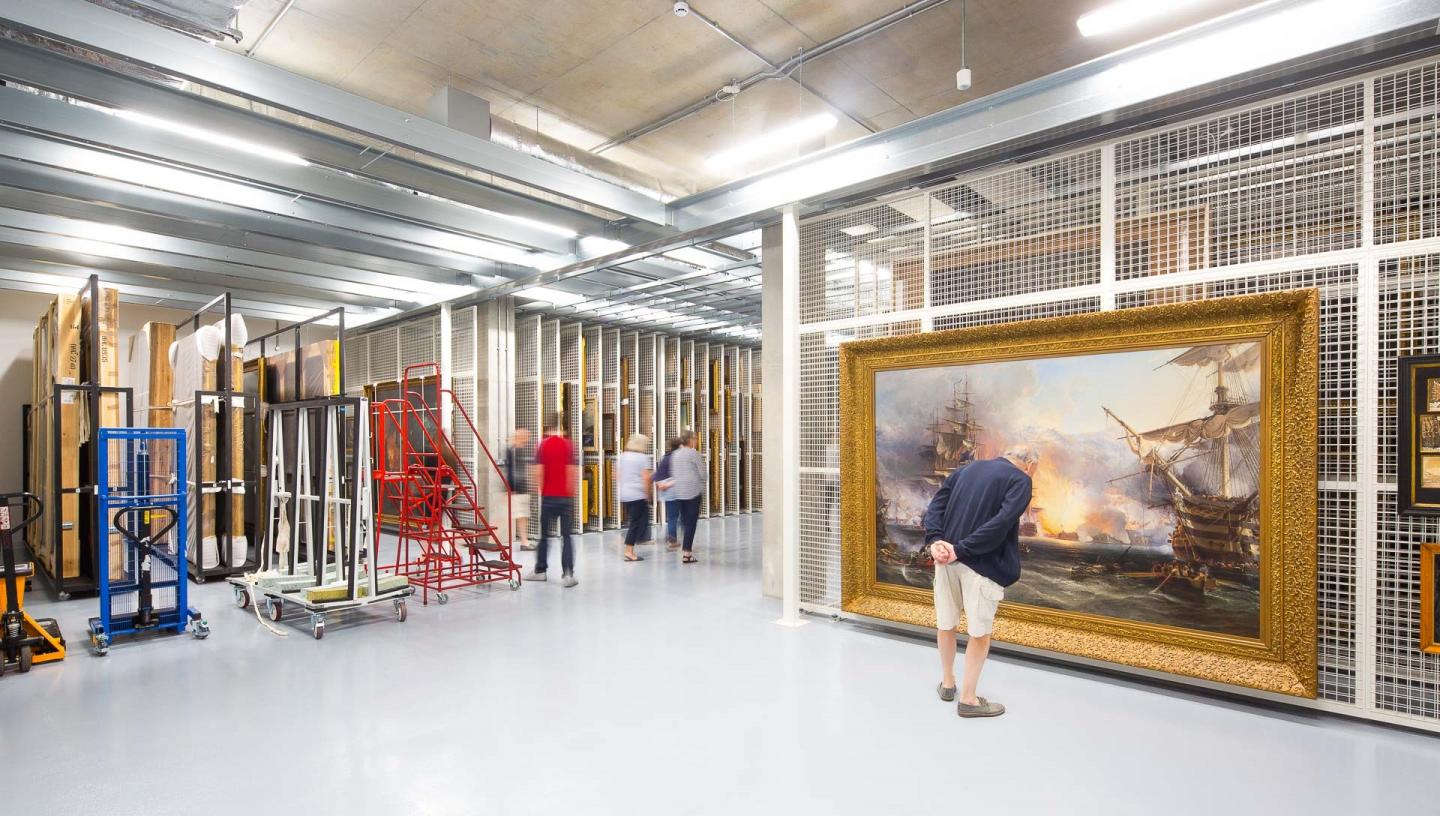There are currently 811 relics including souvenirs made from ship timbers and metal; parts of ships or items associated with ships, corporate bodies or buildings. The antiquities collection contains a further 975 items relating to general material culture and social history rather than to a named person or ship. (Polar relics are in a separate collection).
Relics
The relics collection includes items associated with named people that do not fit into other collections and material from excavated or salvaged wreck sites; there are many souvenirs made from Victory timber.
Highlights include:
- a primitive carving of the Flaxman Nelson monument at St Paul‘s made of Victory timber
- Nelson‘s pigtail
- combined knife and fork and Turkish canteen
- the Bounty mutineer John Adams‘ original Pitcairn grave marker
- material relating to Bounty and to Bligh‘s subsequent epic boat voyage
Antiquities
The antiquities collection includes preserved food and food containers, items relating to maritime custom and superstition, bar, office and smoking items, submarine cable, natural history and geological specimens, trade signs, animal collars, musical instruments and gramophone records, toys and games, and printed ephemera. Individual items of note include:
- Matthew Flinders‘ backgammon board
- the little midshipman trade sign
- two musical instruments—William Edward Parry‘s violin, Hussey‘s banjo
- a 1797 drum from St Fiorenzo
- a jigsaw puzzle celebrating early Arctic exploration
- a Punch and Judy set
Using our collections for research
The collections at Royal Museums Greenwich offer a world-class resource for researching maritime history, history of art, astronomy and time. Find out how you can use our collections for purposes of research.
